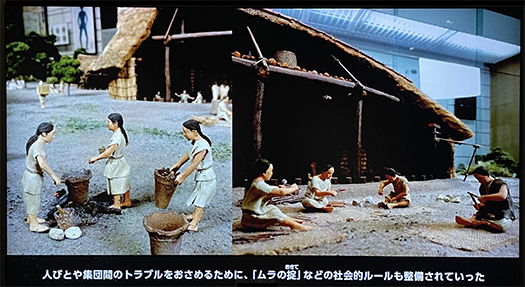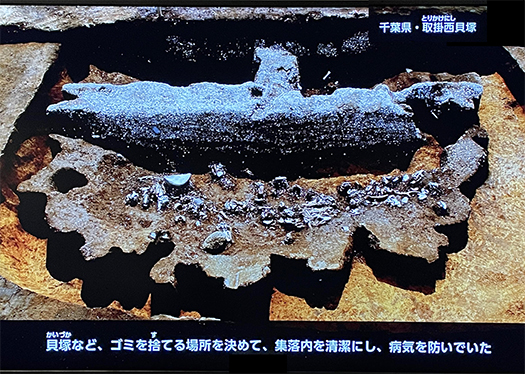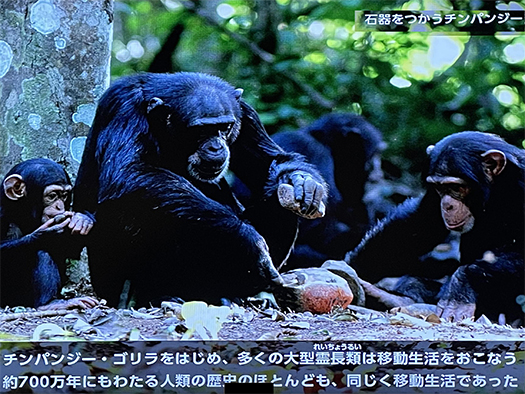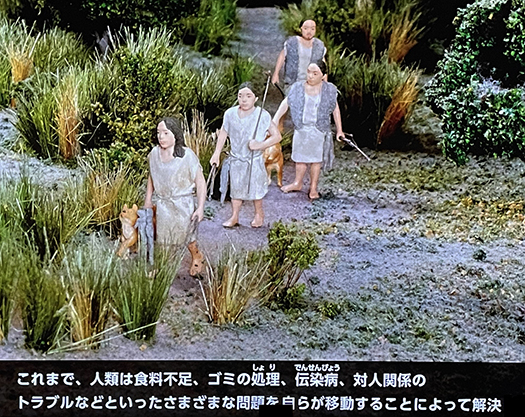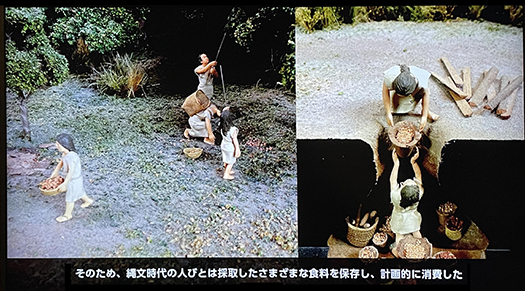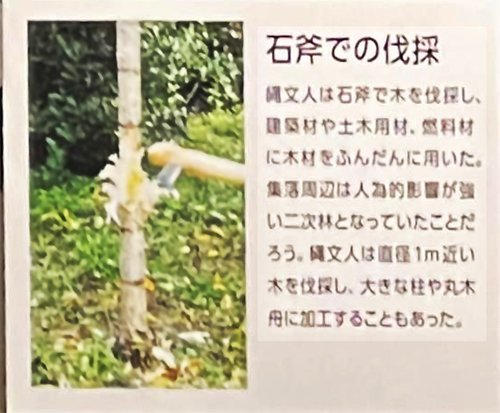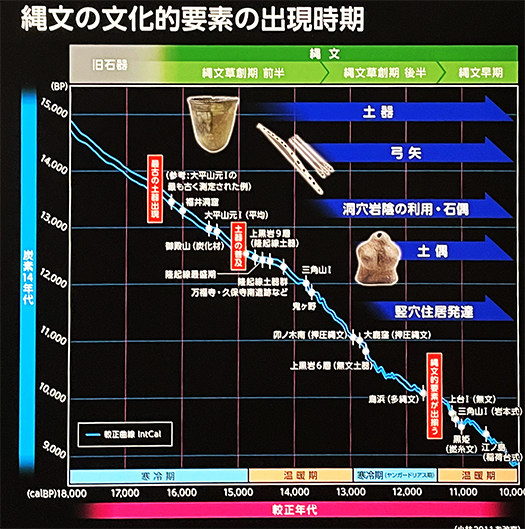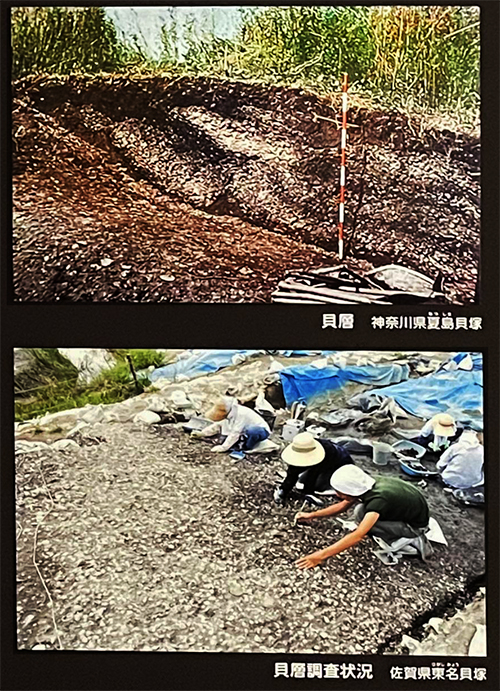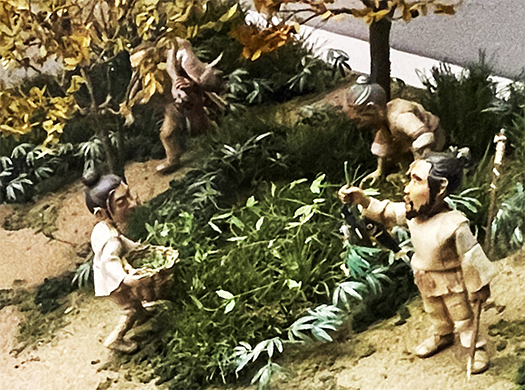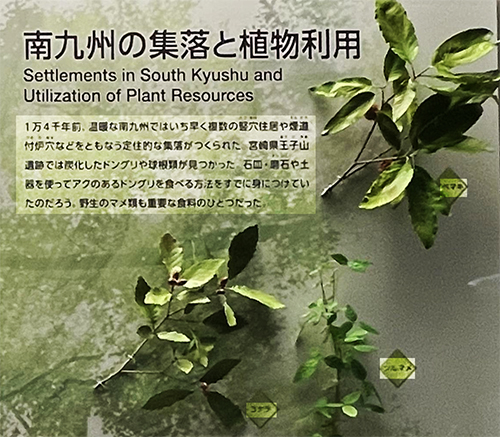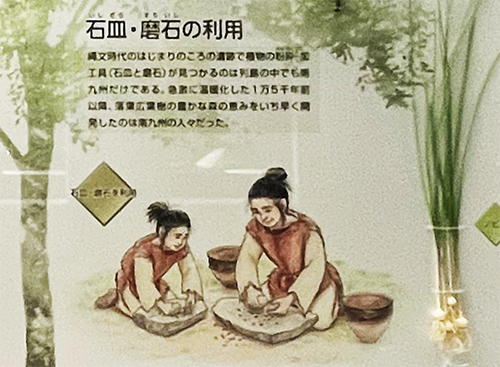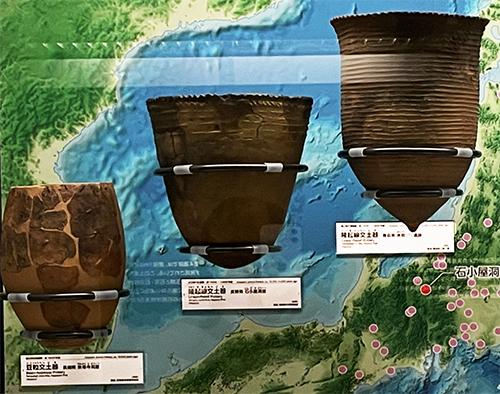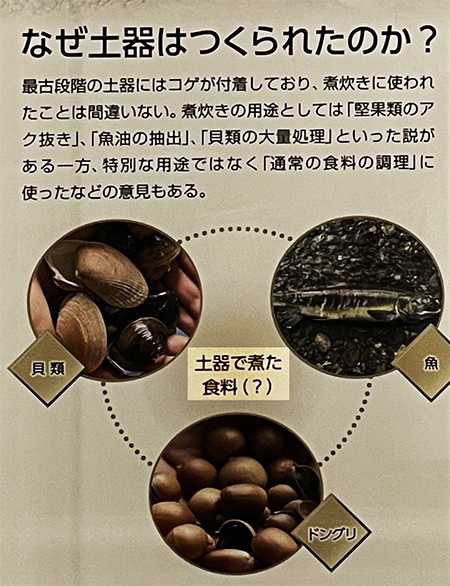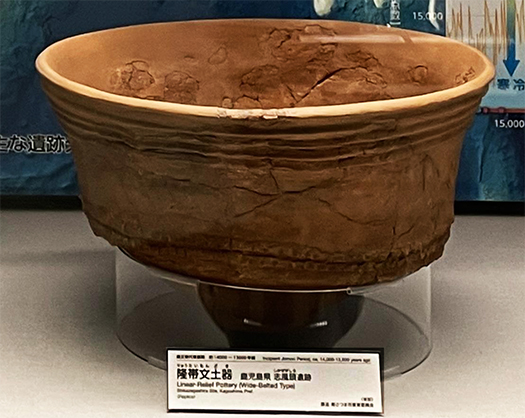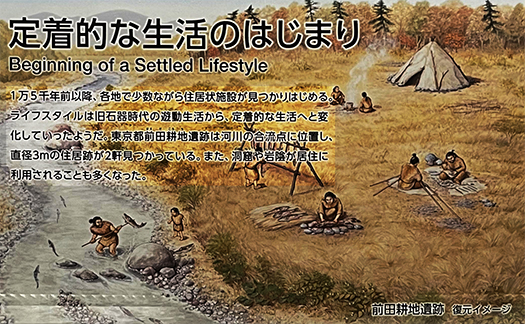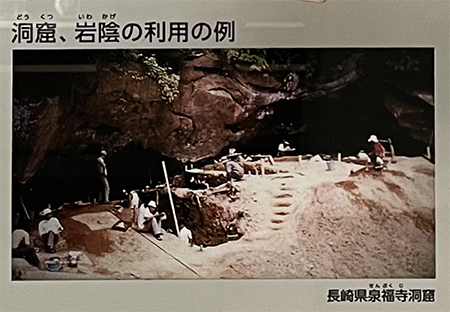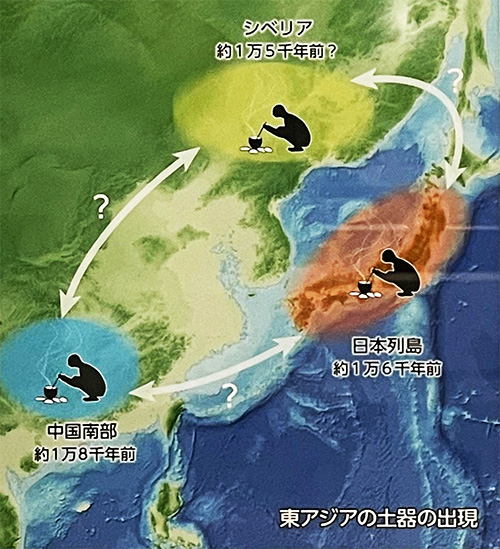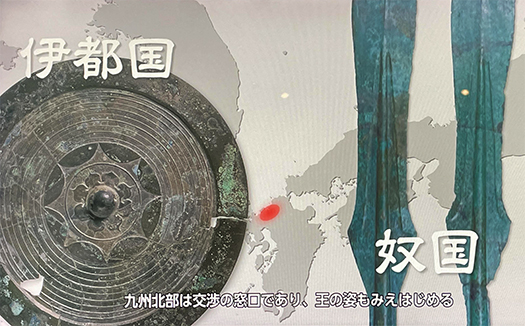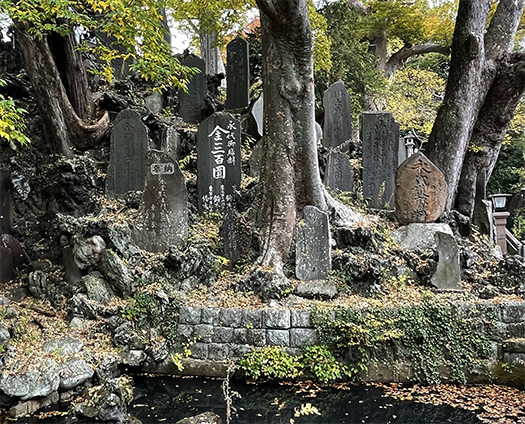
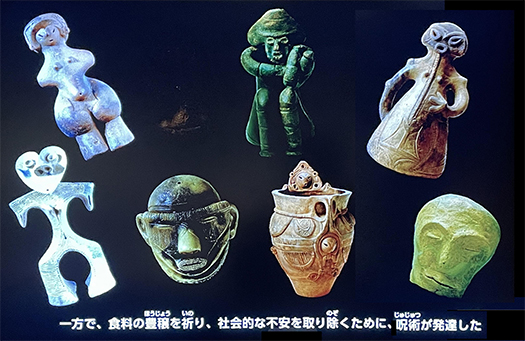

縄文期が日本列島で始まって最初に作られるようになった文化は土器。
堅果類などの食物を貯蔵する目的での「容器」として
最初期の道具として発達していったモノでしょう。
列島の土壌中に普遍的に存在する粘土に水分を含ませて帯状にして
それを積み重ねていって造形したことが想像される。
土器は列島各地域で独特の形状が発掘されるという。
歴史萌芽期、奈良盆地纏向遺跡からは全国各地の特徴的な土器が出土するけれど、
たぶん全国各地域勢力から集結した人々が各地の産品を持参し
交易した残滓なのではないかと思われている。(連載のなかで触れていく予定)
列島各地域で微妙に変化する土壌成分とその産品に合わせて
独特の土器が作られていったことだろう。
その技術が基盤になって、徐々に精神性を表現する土偶が作られていった。
縄文の世の人々の感受性や祈り、願いというような素朴な思いが
こうした土偶には込められていったのだろうと思える。
ラディカルな表現作家として著名な岡本太郎は、この土偶に強いインパクトを受けた。
弥生社会ではこうした祈りの象徴は墳墓周辺を飾った埴輪に変容していくけれど、
埴輪が非常に「のっぺりとした」表現であるのに対して
土偶はゴツゴツとした呪術的な表現、デフォルメされた象徴性を感じさせられる。
岡本太郎的直感から原日本人的心性をそこに見たのだろう。
その見立てに対して、青春期以来わたしは同意する気分で生きてきた。
こういう「象徴表現」は祭政の一端を表現するとされるので、
縄文の定住が進化して行った段階でも呪術・宗教的な仮託物だったと思う。
権力者の墳墓と埴輪にはその後の仏教伝来で代替された政治性表現が強い。
縄文の世の土偶も、各地域ごとの祭政の用に供された可能性が高い。
精神・象徴性・祭祀の表現物であったことは疑いない。
帯状の粘土素材から表情を表現したと考えると印象に納得感が出てくる。
そう考えていくと土偶とは日本的八百万の神性がそこに込められているのか。
いかにも土着的な、地面から生み出されたような表現。
土偶の表現テーマとして最多のように思えるのはやはり人間の再生産、
子どもを出産する母性、母体をデフォルメしたカタチ。
祭祀というよりも祈りに近い感情の表現されたものとして
妊娠した女体をイメージする土偶が作られ続けたのではないか。
人々が祭祀ということを集団の結束のツールとして導入していくとき、
成員全員が同意できる象徴物・テーマとして母体・母性が採択されたのか。
「原始,女性は太陽であった」という思想なのかも。
日本の伝承の皇祖神・アマテラスが女性神であることと通底するのだろうか。
土偶とアマテラスの間にある深いミッシングリンク。
後世、弥生の世になって国家概念が広がっていったとき、
アマテラスが女性神になったのには、こうした土着概念を利用して行ったのかも。
こういう見方に徐々に傾いてきている現在であります。
English version⬇
The Original Japanese Sensibility of Earthenware and Clay Figures: The 37,000-Year History of the Japanese Archipelago – 19
The thematic universality of the female body bearing a child as an expression of the emergence period of Mura-integrated rituals. The missing link between clay figurines and the myth of Amaterasu. The Missing Link between Clay Figure and the Myth of Amaterasu.
Earthenware was the first culture to be created when the Jomon period began in the Japanese archipelago.
These were the first tools developed as “containers” for storing hard fruits and other foodstuffs.
These were probably the first tools to be developed.
Clay, which is ubiquitous in the soil of the archipelago, was moistened to form strips of clay, which were then piled on top of each other to form the vessel.
The clay, which is ubiquitous in the soil of the archipelago, was piled on top of each other to form the vessel.
Unique shapes of earthenware are said to have been excavated in each region of the archipelago.
In the budding historical period, distinctive earthenware from all regions of Japan was excavated from the Sumamukai site in the Nara Basin, but it is not clear whether the earthenware was made by a group of people from all regions of Japan.
It is thought that they are probably remnants of the products of the people who gathered from various regions of the country and brought with them products from each region.
The pottery is thought to be the remnants of trade between people from different regions of Japan who brought products from their respective regions. (This will be discussed in a series of articles.)
It is likely that unique earthenware was made to match the soil composition and products of each region of the archipelago, which varied slightly from region to region.
The unique earthenware was probably made in accordance with the slightly changing soil composition and products of each region of the archipelago.
The techniques used to make clay figurines gradually became the foundation for the creation of clay figurines expressing spirituality.
The Jomon people’s sensitivities, prayers, and wishes were expressed in these clay figurines.
The Jomon people’s sensitivities, prayers, and wishes must have been expressed in these clay figurines.
Taro Okamoto, a well-known radical artist, was strongly influenced by these clay figurines.
In Yayoi society, such symbols of prayer were transformed into haniwa (clay figurines) that decorated the tombs and their surroundings.
Haniwa clay figurines are very “plain” in their expression.
Haniwa are very “plain”, whereas Dogu (clay figurines) are very rugged, spellbinding, and symbolic in a deformed way.
Taro Okamoto’s intuition may have led him to see in them a proto-Japanese mentality.
Since my youth, I have been in the mood to agree with this view.
Since this kind of “symbolic expression” is said to express a part of ritual politics, it is not surprising that the Jomon settlements have evolved.
I think that even in the stage of evolution of Jomon settlement, they were magical/religious objects.
The tombs of the powerful and haniwa clay figurines have a strong political expression that was replaced by the introduction of Buddhism later.
It is highly likely that clay figurines of the Jomon period were also used for ritual politics in each region.
There is no doubt that clay figurines of the Jomon period were objects expressing spirituality, symbolism, and rituals.
The impression becomes more convincing when we consider that the clay material in the shape of a band was used to express facial expressions.
In this way, do clay figurines contain the Japanese divinity of 8,000,000?
The expression is very indigenous, as if it was created from the ground.
The most common themes of expression for clay figurines are the reproduction of human beings, the motherhood of giving birth to a child, and the mother’s love for her child.
The most common theme of clay figurines is the reproduction of human beings, motherhood giving birth to a child, and the deformed form of the mother’s body.
Clay figurines express emotions more akin to prayer than to ritual.
The clay figurines with the image of a pregnant female body may have continued to be made as an expression of feelings similar to prayer, rather than as a form of ritual.
When people introduced rituals as a tool for group cohesion
When people introduced ritual as a tool for group cohesion, did they adopt motherhood and motherhood as a symbol or theme that all members of the group could agree on?
Perhaps it is the idea that “in the primitive times, women were the sun.
Is this a similarity to the fact that Amaterasu, the ancestral goddess of Japanese folklore, is a female deity?
This is a deep missing link between the clay figurines and Amaterasu.
In later times, when the concept of nationhood spread in the Yayoi period
Amaterasu may have used this indigenous concept to become a female deity.
I am now gradually leaning toward this viewpoint.
Posted on 11月 19th, 2022 by 三木 奎吾
Filed under: 日本社会・文化研究, 歴史探訪 | No Comments »



